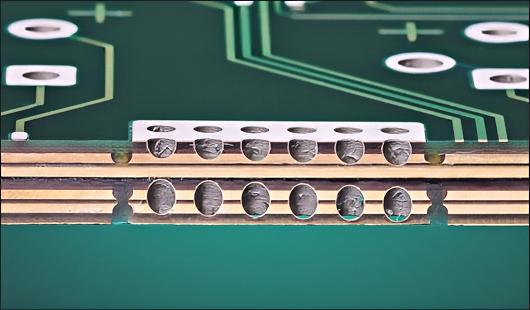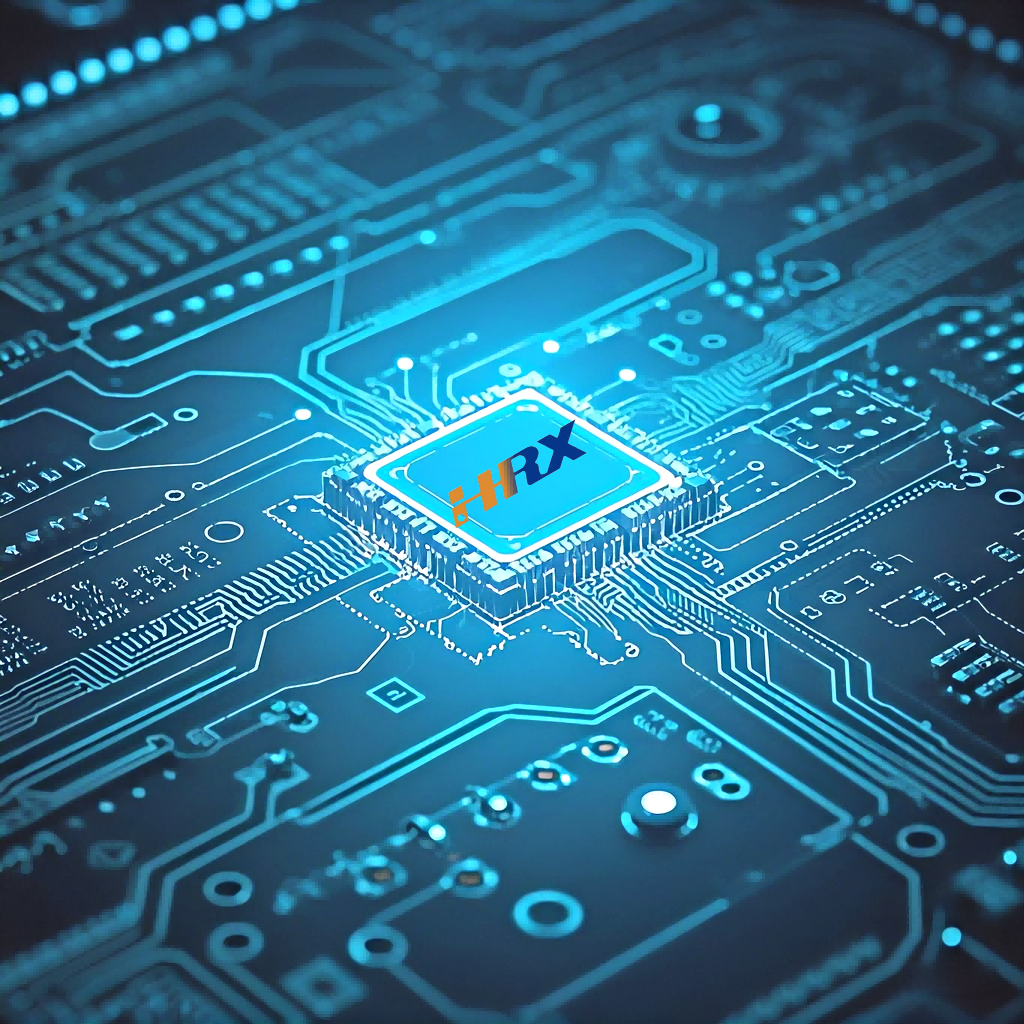Search
Unraveling the Intricacies of Selecting Optimal Materials for Thick Copper PCBs: A Deep Dive with Insights and Real-World Experiences
- Jan 08,2025
-
Share
Greetings, dear tech mavens and industry connoisseurs! In the highly specialized domain of printed circuit boards (PCBs), thick copper PCBs have emerged as a linchpin, catering to the escalating demands across diverse application spectrums. Here at Shenzhen Huaruixin Electronics Co., Ltd., armed with our profound expertise and years of hands-on practice, we are elated to escort you through the labyrinthine process of material selection for thick copper PCBs and proffer invaluable suggestions tailored to their deployment in sundry fields.

1. Decoding the Fundamentals of Thick Copper PCB Materials
Thick copper PCBs mandate materials that can not only endure but also augment their unique attributes and requisites. The substrate, serving as the backbone, must possess exemplary mechanical robustness to withstand the stresses and strains during fabrication, assembly, and operational phases. Consider a high-power industrial control unit we meticulously crafted. The PCB was destined to brave vibrations and temperature excursions. Opting for a fortified FR-4 substrate endowed it with the requisite rigidity and stability, safeguarding against potential deformations and ensuring reliable performance.
The copper foil, a quintessential constituent, is the conduit for electrical current. Its thickness, customarily spanning from 35μm to 200μm or beyond, dictates the current-carrying capacity. In a recent foray into the realm of electric vehicle (EV) chargers, we harnessed 70μm thick copper foil. This strategic choice was pivotal in managing the torrential currents associated with rapid charging, facilitating efficient power transfer and curtailing heat dissipation attributable to resistance, thereby enhancing the overall charging efficacy.
2. Thermal Management: Material Selections for Heat Dissipation and Expansion
Heat dissipation poses a formidable challenge in thick copper PCBs, especially in power electronics arenas where components disgorge copious amounts of heat. Metal-core substrates, notably aluminum-based PCBs, have ascended to prominence.
Recounting our exploits in a renewable energy inverter project, the inverter was tasked with optimizing solar energy conversion. The thick copper PCB at its heart was juggling hefty currents. By integrating an aluminum-based substrate, we capitalized on aluminum's superlative thermal conductivity. The heat engendered by the copper traces was expeditiously dissipated through the aluminum stratum, precluding overheating of components and vouchsafing seamless operation. This not only turbocharged the inverter's efficiency but also prolonged its operational lifespan.
Another thermal aspect, the thermal expansion coefficient (CTE), demands meticulous attention. When disparate materials with incongruent CTEs coalesce, it can precipitate warping or delamination under temperature fluctuations. In a communication device PCB we engineered, we painstakingly cherry-picked materials with harmonious CTEs. The insulating layer and copper foil were synchronized in their expansion and contraction patterns, preserving the PCB's structural integrity even when subjected to extreme thermal vicissitudes.
3. Electrical Performance: Picking Materials for Conductivity and Dielectric Properties
The electrical conductivity of materials within thick copper PCBs is sacrosanct. High-purity copper, renowned for its stellar conductivity, is the staple for conductive layers. However, the quality of copper, encompassing its surface finish and grain structure, wields significant influence. In a high-frequency application, such as a wireless charging module for smartphones, we were obliged to ensure the copper foil boasted a mirror-like surface to mitigate signal attenuation.
Simultaneously, the dielectric attributes of insulating materials cannot be overlooked. In a server power supply PCB, optimizing the dielectric constant and loss tangent of the substrate was imperative to stave off signal interference and guarantee stable power delivery. By deploying a state-of-the-art high-performance insulating material, we achieved the coveted electrical performance, empowering the server to function without a hitch.
4. Chemical Endurance and Durability: Selecting Materials for Harsh Environments
In numerous applications, thick copper PCBs are thrust into hostile environments. In industrial milieus, they may encounter corrosive chemicals, humidity, and other deleterious agents. For a PCB earmarked for a chemical plant's control system, we had to scout for materials with outstanding chemical resistance.
We settled on a specially formulated, chemically resistant FR-4 substrate augmented with a protective coating. This shielded the copper traces from oxidation and corrosion and maintained the insulation integrity of the PCB. In outdoor applications, like a solar power generation system, the PCB had to weather UV radiation, rain, and dust. Here, we plumped for materials with UV-resistant coatings and sterling moisture resistance, ensuring the long-term viability of the PCB.
5. Application-Centric Recommendations and Triumph Tales
Power Electronics
In power electronics precincts, such as motor drives and power supplies, thick copper PCBs are indispensable for corralling high currents. In a project for an EV motor controller, we architected a multilayer thick copper PCB. The inner layers were consecrated to power distribution, with thick copper planes to ferry the mammoth currents, while the outer layers were reserved for signal routing. This stratified design optimized current-carrying capacity and signal fidelity, culminating in a more efficient and reliable motor controller.
Communication Equipment
For communication equipment, signal integrity and EMI shielding are non-negotiable. In a 5G base station PCB we fabricated, we amalgamated thick copper layers with cutting-edge shielding materials. The thick copper furnished stable power and ground planes, slashing impedance and enhancing signal quality. The shielding materials, such as metalized coatings, were deployed to repel electromagnetic interference from external sources and other components within the device. This bespoke design enabled the 5G base station to operate with blazing data transfer rates and minimal signal distortion.
Renewable Energy Systems
In renewable energy systems like solar and wind power, thick copper PCBs contribute to efficient energy conversion and management. In a large-scale wind turbine control system, the thick copper PCB was entrusted with coordinating the sundry components and handling the power generated. We employed materials that could withstand the austere outdoor environment and high power demands. The success of this project led to augmented power generation efficiency and diminished maintenance exigencies for the wind turbine.

In conclusion, the selection of apt materials for thick copper PCBs is a convoluted yet remunerative odyssey. At Shenzhen Huaruixin Electronics Co., Ltd., we have refined our methodologies over the years through myriad projects and ceaseless innovation. We beckon you, whether you are a seasoned virtuoso or a nascent enthusiast, to engage in fruitful dialogues with us. Let's unlock the boundless potential of thick copper PCBs together and propel the future of technology onward.
So, dear friends, if you have any questions, insights, or just want to chat about thick copper PCBs and their materials, feel free to reach out. We're all ears.

Let’s talk! We’ll provide the perfect solution for you!
-
 Huaruixin Electronics mainly produces printed circuit boards as the core business, to provide customers with one-stop solutions for FPC/PCB production, components sourcing and Assembly.
Huaruixin Electronics mainly produces printed circuit boards as the core business, to provide customers with one-stop solutions for FPC/PCB production, components sourcing and Assembly. - WHAT WE DO — PCB Design Solutions — Flex PCB Production — Components Sourcing — FPC&PCB Assembly
- PRODUCTS — Single Sided Flexible Circuits — Double Sided Flexible Circuits — Multilayer Flexible Cirucits — Rigid-Flex Circuits — FPC Assembly — PCB Assembly
- CAPABILITY — FPC Capability — Rigid-Flex Capability — PCB Capability — Assembly Capability
- Copyright © 2024 Shenzhen Huaruixin Electronics Co., Ltd. All Rights Reserved.
- Design By BONTOP


